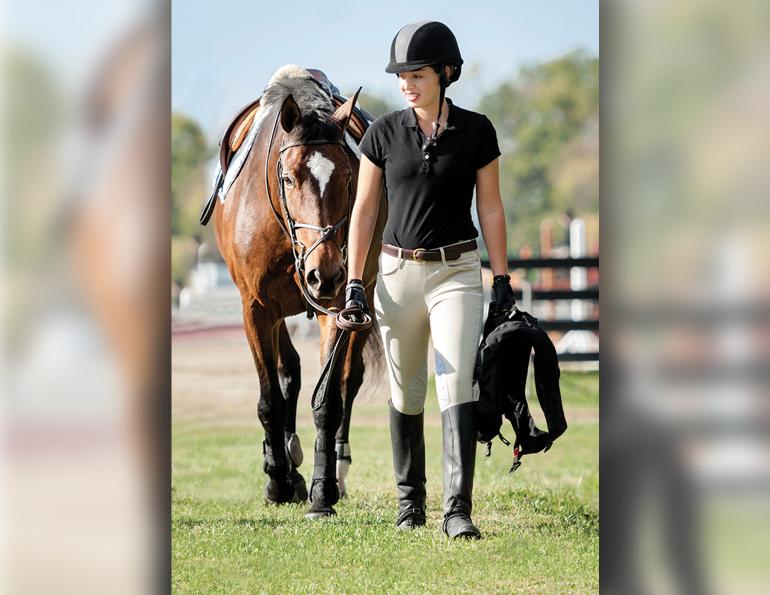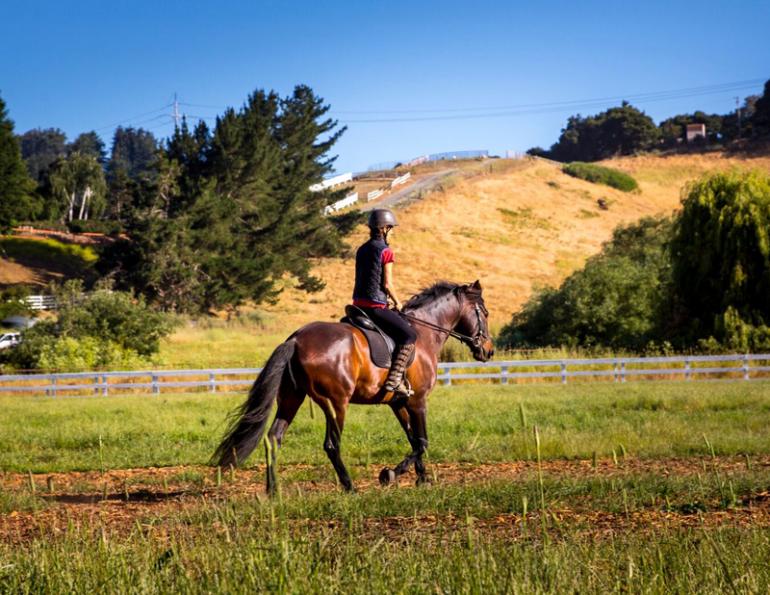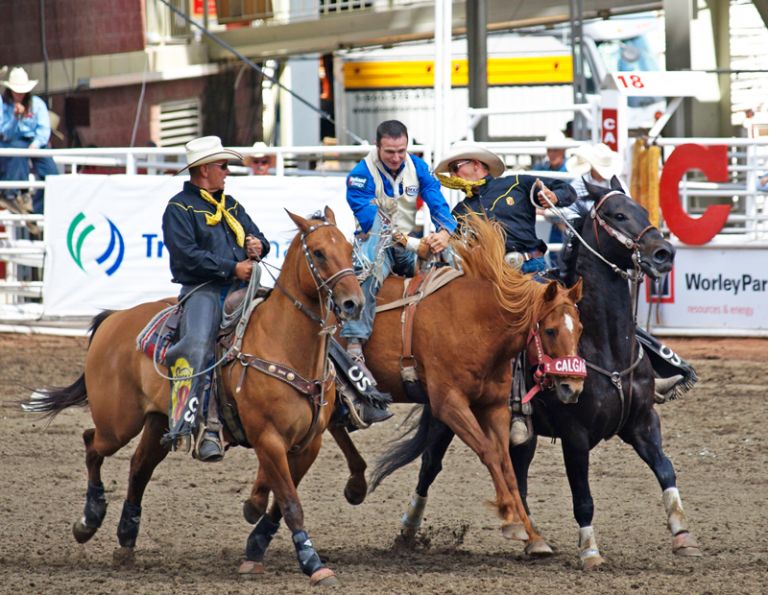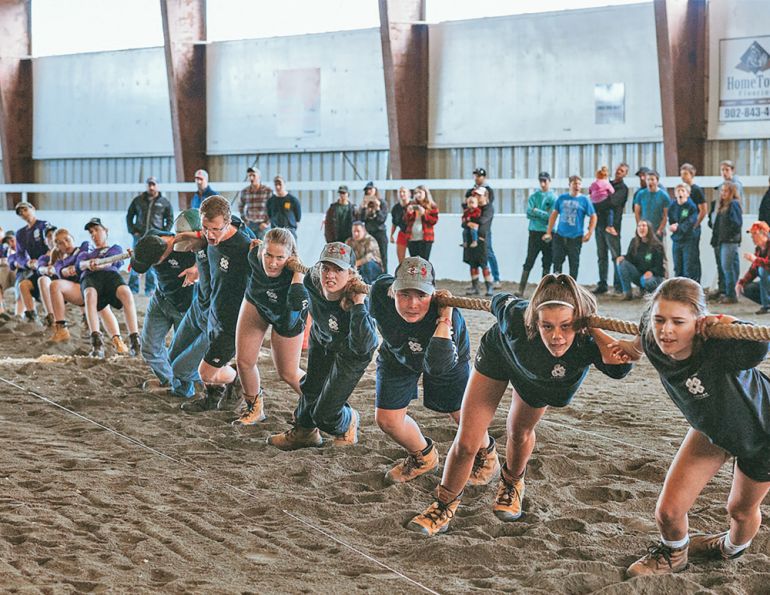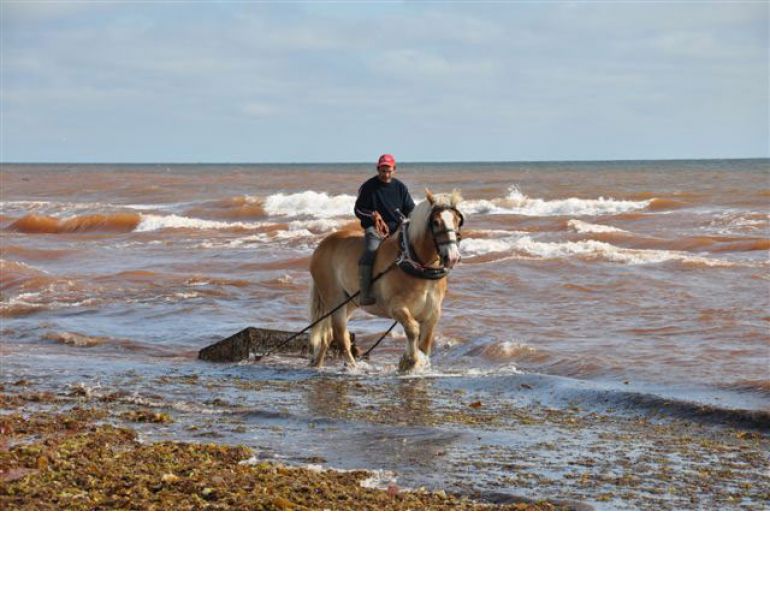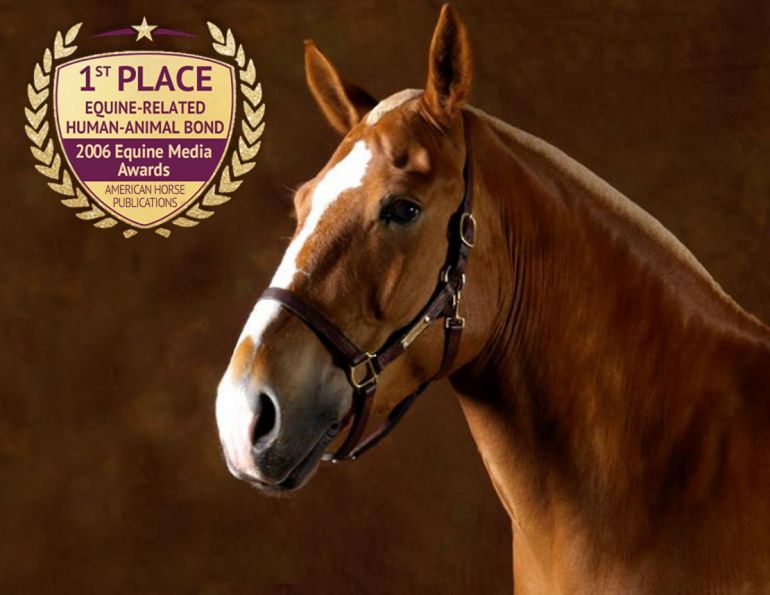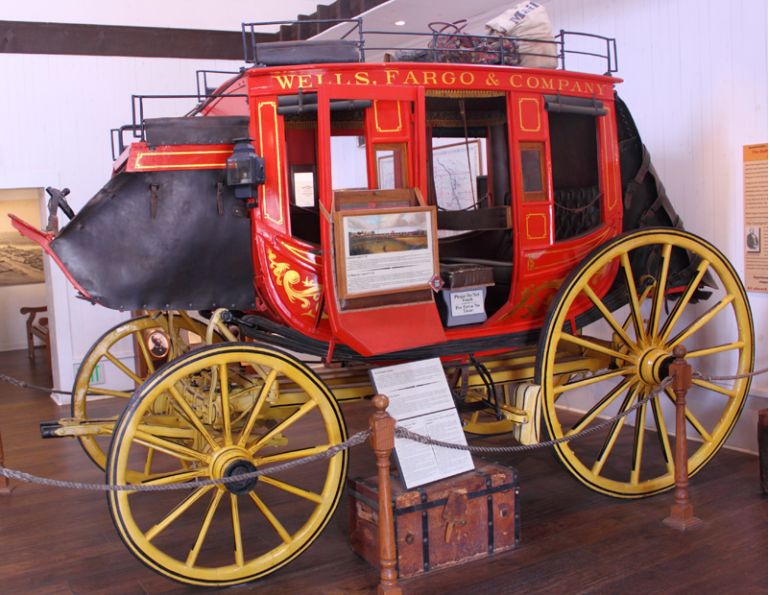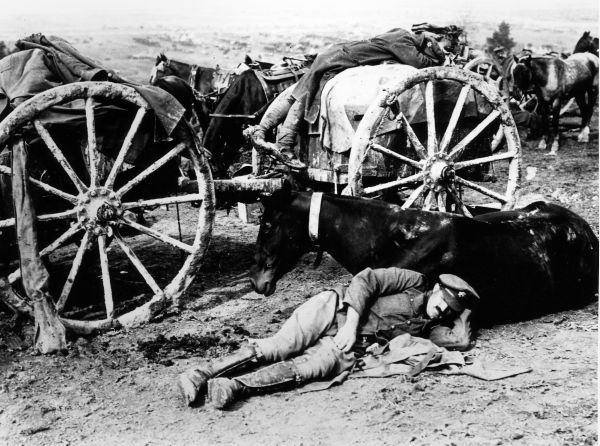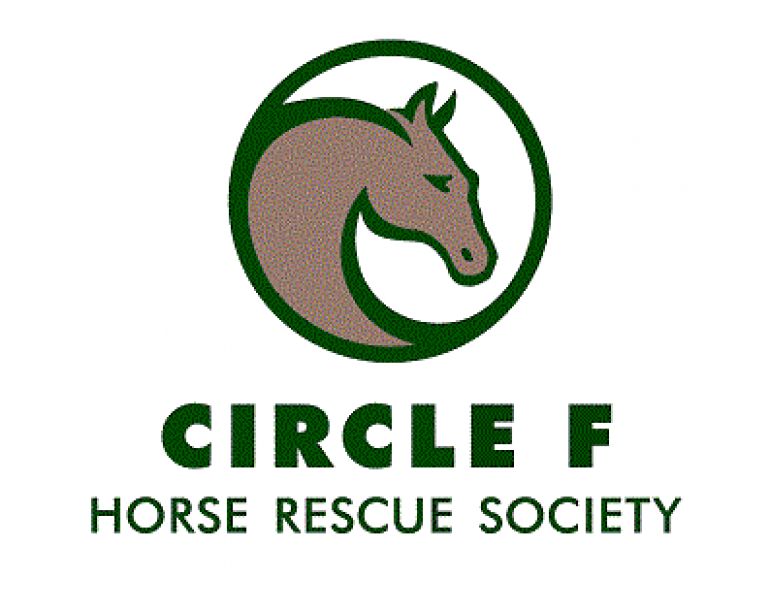Of Horses and Men
An exclusive exhibition presented by Pointe-à-Callière
May 20 to October 16, 2016
Horses have always fascinated us, and for its latest exhibition, Pointe-à-Callière Montréal Museum of Archaeology and History invites the public to admire this noble animal through the eyes of a passionate collector. In a worldwide exclusive, the Museum presents Of Horses and Men, an exhibition based on the private collection of Émile Hermès. For five months, Montrealers and visitors from around the world will get the chance to explore some of this collection, assembled by the former head of Hermès International.
In a real coup for Montréal and Pointe-à-Callière, the Museum is exhibiting some 250 remarkable objects on loan from the Émile Hermès Collection, normally housed in private rooms at the company’s prestigious Parisian shop at 24 Rue du Faubourg Saint-Honoré. Startling in its historical and cultural significance, the collection recounts the story of the horse and its relationship to people. To date, only a lucky few outside the company have ever visited the collection.
As visitors wander through this delightful exhibition, produced by Pointe-à-Callière in close collaboration with Hermès International, they will come to understand some of Émile Hermès’s passion. A lover of horses and all things equestrian, Hermès spent his life collecting thousands of works of art, paintings, books, rare and unusual objects, or stylish everyday items from a bygone era.
“When I first entered the office of Émile Hermès, it was like visiting a magical realm filled with marvels. There was a regard for quality and a love of craftsmanship employed in the service of riders and their mounts. I saw not only a collection, but the vision and passion of someone who collected in order to preserve a heritage that was both tangible and intangible. I knew at that moment that one day, we just had to make these objects more accessible and give our visitors a chance to experience this place and its touching significance. I offer my sincere gratitude to the descendants of the family of Mr. and Mrs. Émile Hermès, who were so generous in opening their doors to us,” states the Museum’s executive director, Francine Lelièvre.
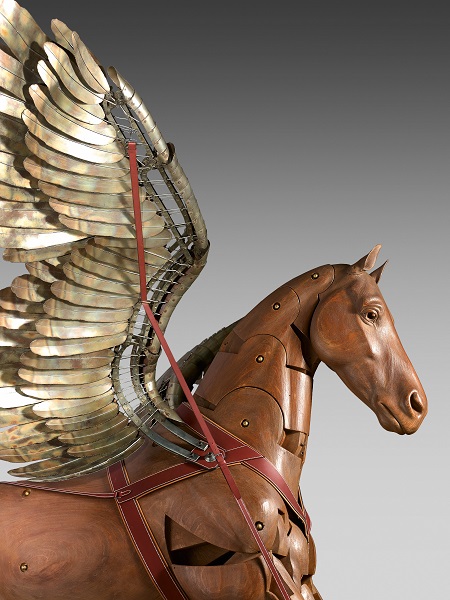
Sculpture by Christian Renonciat representing Pegasus, wings outspread. Created in 1984 from beech, blued steel and leather. Émile Hermès Collection, Paris © Studio Sébert
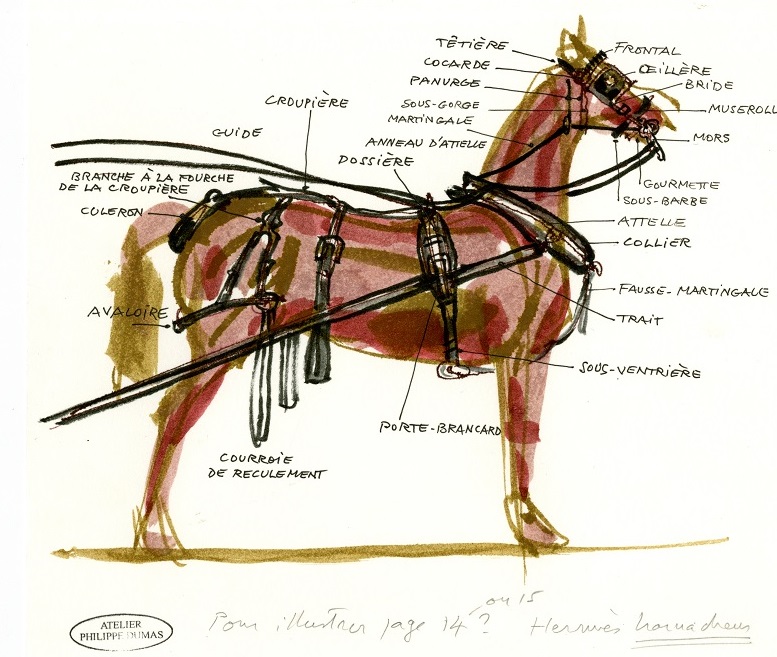
Founded in Paris in 1837, Hermès International began as a maker of harnesses and saddles at a time when horses ruled the streets. Under the leadership of the founder’s grandson Émile Hermès (1871–1951), the firm truly took off, adapting its products to the new lifestyles of an elite clientele. A sign of wealth and power, the horse was long associated with the monarchy, nobility, bourgeoisie, and prestigious racing stables. But as the automobile began to replace the horse in daily life, the saddle maker-turned-leather merchant and avant-garde couturier realized the urgency of preserving the precious treasures of equestrian heritage. Acutely aware of the horse’s enduring appeal, Émile Hermès was able to transfer the traditional values and know-how involved in making saddles to creating high-quality leather and other goods. He also cared about innovating while at the same time maintaining Hermès’s international reputation. Visitors will be able to see many of the collector’s personal possessions, including the impressive rocking horse used by all of his children, and to discover a family business that has remained true to its values and that uses the past to inspire its present and future.
“We allowed ourselves to be persuaded to do this exhibition because the museum took an interest not only in the collection but also in the collector. The collection touches something primordial in us by revealing the importance of the horse in our lives right from childhood. But it also reveals the work of a man, Émile Hermès, who, in collecting, simply prolonged his own childhood. Placed on a rocking horse as a child, he collected anything that reminded him of horses throughout his life,” notes Philippe Dumas, author, illustrator, and grandson of Émile Hermès.
Menehould du Chatelle, director of cultural heritage at Hermès International, adds that “most people who encounter the Émile Hermès Collection find it magical because its originality and uncommon abundance create such a strong impression, like a vast forest that exudes an irresistible charm and warmth.”
On the Horse’s Trail
Saddles, stirrups, spurs, and other horse tack from around the world are just some of the many objects along the horse’s trail, which takes visitors on a journey from Antiquity to the Renaissance to the 20th century.
The collection also includes a wonderful selection of paintings by great and lesser-known masters, as well as sculptures, engravings, and drawings. For as long as horses have been a part of human life, artists have endeavoured to express their beauty, strength, and courage, bringing famous, historical, and mythical horses – like Pegasus, the winged horse of Greek mythology – to life. The exhibition is also dotted with a number of whimsical drawings created especially for the occasion by Philippe Dumas.

A magnificent sidesaddle stirrup in copper alloy and moonstone from South America, 19th century. Émile Hermès Collection, Paris © Studio Sébert
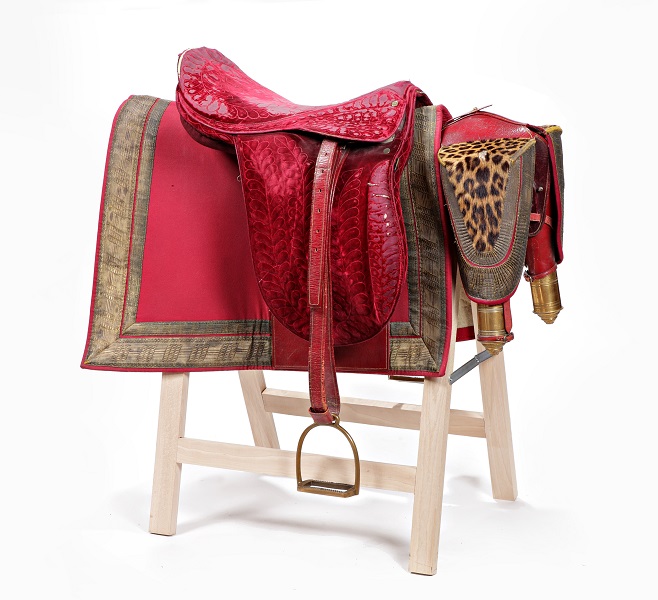
The model of this regulation saddle, made by Hermès, changed over the years but persisted through World War I (1914–1918). Panther skin, silk velour, Moroccan leather, brass, wool serge, wire. Bidal & Piat, early 20th century. Émile Hermès Collection, Paris © Photo Thierry Jacob
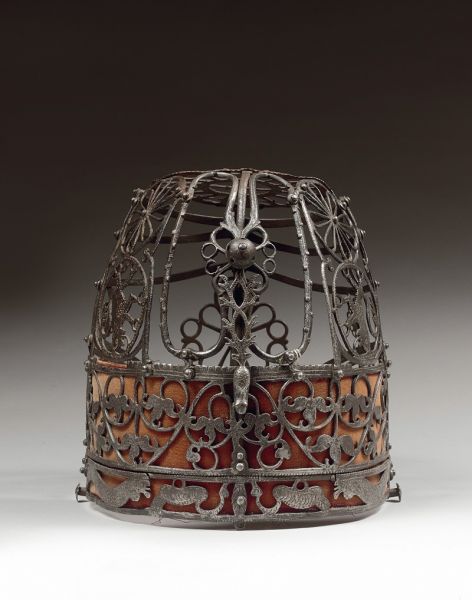
A kind of muzzle, the noseband helps control the horse and prevents a spirited stallion from biting. Made of iron, this German example was forged in the late 16th century. Its decorations include lions, foliage scrolls, and a stag’s head. Émile Hermès Collection, Paris © Studio Sébert
The Time of Horses and Carriages
Visitors will also discover the wide variety of horse-related occupations and their tools: farrier, coachman, postillion and the like. Examples of technological innovation testify to the ingenuity shown in every era, whether it be specially designed hot-water bottles and foot-warming stirrups to ward off the cold or inventions like blinder bits to improve safety.
Gradually, however, the horse’s role moved from utilitarian duties to more leisurely pursuits such as riding, hunting, racing, and horse shows. Horsewomen feature prominently in the collection: sidesaddles and riding habits, along with a host of women’s equestrian accessories, are sure to surprise. Many objects, such as cases, bags, saddlebags and trunks, illustrate Hermès’s smooth transition from saddle maker to luggage maker. Ever mindful of innovation, Émile Hermès journeyed to North America during World War I on a mission to supply the French cavalry with horses and harnesses. Among the items he brought back from his stay on this side of the Atlantic was an innovative system that he would adapt for use in his creations and for which he procured a licence in France that was, for a time, exclusive: the zipper. He considered the many ways to use the new fastener and adapted it to leather accessories, travel items, ladies’ handbags, and sports clothing.
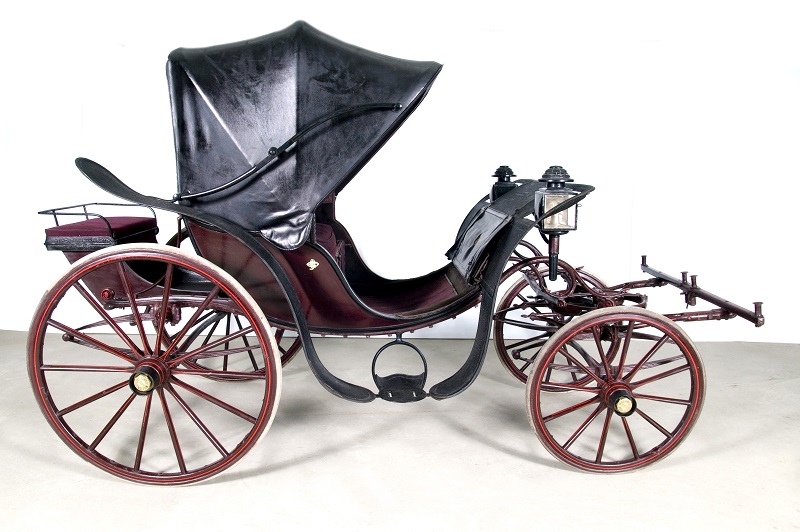
This luxury pleasure carriage featured an open, low-slung body, making for easy mounting, and could be fitted with a collapsible top. A Phaeton was designed to be driven by the owner, so it did not feature a box seat for the coachman. However, a rear bench could be used by the groom. Made by Million et Guiet. Early 20th century, Paris. Musées de la civilisation, Québec, Paul-Bienvenu endowment. © Denis Deziel
The office of Émile Hermès: The Soul of 24 Rue du Faubourg Saint-Honoré
The exhibition ends with an intimate glimpse into Émile Hermès’s office, that mythical and magical place from where the master led the firm. A reflection of the visionary and passionate collector who was Émile Hermès, this immersive space burgeons with an eclectic abundance of works honouring the horse and equestrian cultures: a small Mexican horse, a studded trunk, a parasol-whip, lanterns, and so on. The evocation of this office, famous yet secret, transports visitors to a world of beauty, creativity, and emotion – an eloquent remembrance of the Age of the Horse.
Enhanced by audio-visual and audio productions, the exhibition also features rare books, catalogues, and, of course, silk scarves, which bear witness to a past that is still very much alive. Not to be missed are masterpieces such as the family rocking horse, a Japanese saddle from the Edo period, harnesses created for monarchs, the Brides de gala silk scarf, works by artists such as Charles Le Brun and Théodore Géricault, a Pegasus sculpture by contemporary artist Christian Renonciat, and models of horse-drawn carriages.
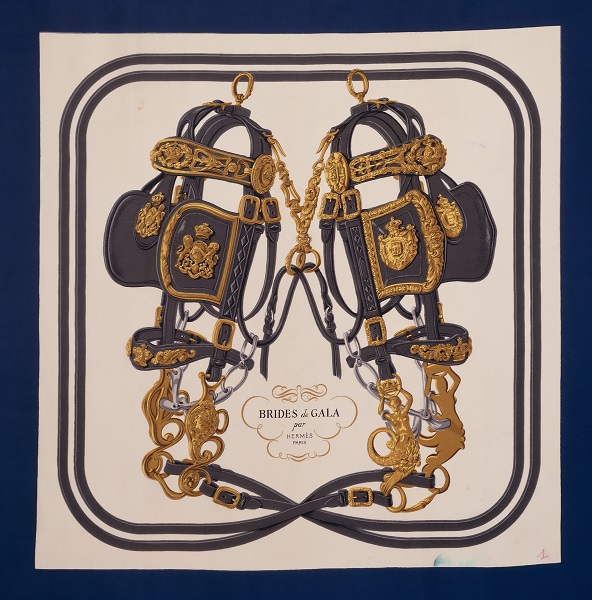
These carrés have become inseparable from the Hermès brand. This one first appeared in 1957 and depicts a set of festive bridles. Designed by Hugo Grygkar, who is among Hermès’s most prolific scarf designers. Collection of the Conservatoire des créations Hermès, Paris © Studio des Fleurs

Portrait from the studio of René Antoine Houasse, ca. 1679. Oil on canvas. Émile Hermès Collection, Paris © Studio Sébert
A Stunning Publication
The accompanying exhibition catalogue, Of Horses and Men – The Émile Hermès Collection, Paris, was produced thanks to the generous authorization of the Hermès family, including Pierre-Alexis and Philippe Dumas, the latter of whom also provided original drawings. This magnificently illustrated 128-page book features photographs of many items in the exhibition and documents from the Hermès Archives. It also contains previously unpublished texts, including a conversation between Philippe Dumas and Menehould du Chatelle, director of cultural heritage at Hermès International; articles by curators Jean-Paul Desroches and Nicolas Chaudun, and by Stéphane Laverrière, assistant curator at the cultural heritage department of Hermès International. The publication is available at the museum gift shop in English and French.
The exhibition Of Horses and Men, featuring items from The Émile Hermès Collection, Paris, was produced by Pointe-à-Callière in collaboration with Hermès International.
The Museum thanks the family and descendants of Mr. and Mrs. Émile Hermès and Hermès International, as well as its sponsors: Air Canada Cargo, STM, InterContinental Montréal Hotel, Tourisme Montréal, and La Presse.
About Pointe-à-Callière
Pointe-à-Callière is the largest and most frequently visited history museum in Montréal. The museum complex rises above a number of national historic and archaeological sites that illustrate major periods in the history of Montréal, Québec, and Canada. The largest archaeology museum in the country, Pointe-à-Callière opened in 1992, on the occasion of the 350th anniversary of the founding of Montréal. The Museum’s mission is to raise awareness and foster an appreciation of Montréal’s history, and to forge bonds with regional, national, and international networks concerned with archaeology, history, and urban issues. The Museum is currently working to complete an expansion project that will showcase some ten heritage and historic sites grouped together under the name Pointe-à-Callière, Montréal Archaeology and History Complex, a world-class cultural and tourist destination.
The Museum is subsidized by the City of Montréal.
Main Photo: The family’s fiery rocking horse dates from the 19th century. Generations of Hermès children have rocked on it since Julie Hermès introduced it into the family. Émile Hermès Collection, Paris © Studio Sébert





